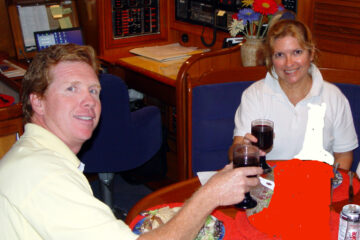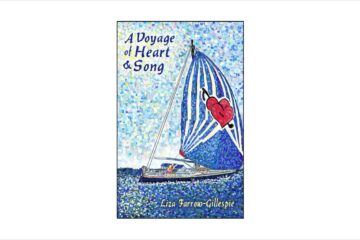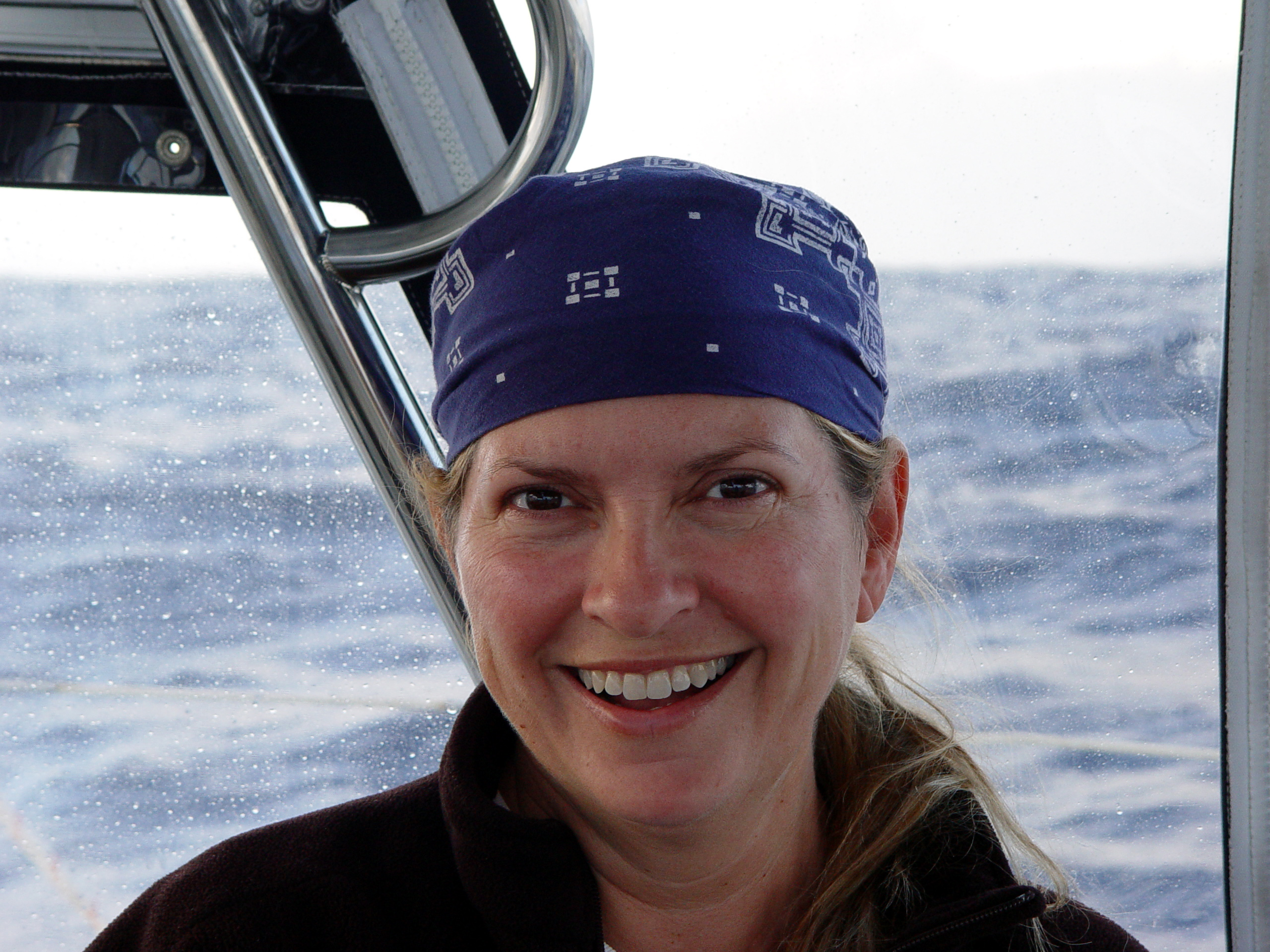Fiji Cruising Notes: June-July 2001
**IMPORTANT NOTE: The information below is NOT intended to be complete, but rather is selective, opinionated, and reflects our own particular experience at the time.**
Entry
Entry ports for Fiji are the following:
- Lautoka (western Fiji)
- Suva (southern Fiji)
- Savu-Savu (northeastern Fiji).
Entry is a 5-step process:
- Customs (separate fee)
- Immigration (separate fee)
- Health (separate fee)
- Agriculture (separate fee)
- Cruising Permit (no fee)
Health and agriculture officials normally visit the boat. It is always possible to check in on weekends or after office hours, but there will be overtime charges, and the amount seems to vary with the official and/or with the yacht. Cruising Permits, which require passport presentation and a compete list of all islands (or groups) to be visited, are available only from the Office of the Commissioner, usually downtown, not at the Customs House. All crew, including guests from home, must be listed on the Cruising Permit.
We entered at Lautoka, and details of entry specific to that port are listed in Port Notes below.
Check-in is slow — usually 2-3 hours. Several alternatives exist. Races and rallies from New Zealand in May and June arrange for collective check-in at scenic spots such as Musket Cove (Mamanucas) and the Lau Group. The agent Yacht Help (PO Box 4799, Lautoka, Fiji; ph 679-668-969; fax 679-668814; [email protected]), located near Lautoka, is said to be very reliable and in some cases to save on the overall check-in bill, particularly for an overtime entry. In any event, their yearly pamphlet is informative and is well worth sending for in advance.
Charts
For the Yasawa Islands, 8 charts printed in Fiji are absolutely crucial: F5 and the the 7-chart hand-drawn “Pickmere” series F105. Those are available in Auckland, New Zealand, and in Fiji in Suva and Vuda Point Otherwise, normal coverage by BA or DMA charts is fine for the rest of the country.
Cruising Guides
- Migrant Cruising Notes — Fiji, by Phil Cregeen
- A Yachtsman’s Fiji, by Michael Calder
- Fiji Nautical Almanac (Fijiian Chart F201)
Radio
Everyone stands by on VHF Channel 16, except Musket Cove, which stands by on Channel 68.
Fiji Port Notes: June-July 2001
Viti Levu (the mainland)
Lautoka
Anchorage: 17deg35.8’S, 177deg26.5E, mud bottom 32-50 ft. We anchored four times at different spots, very far apart, in this area and each time were told we were in the fairway and needed to move. We never figured out where the fairway was. I suspect the port authority may have been having some fun with the American yachties.
Arrival: Upon approach to Lautoka Harbour, call Lautoka Port Control on channel 16 to announce arrival in the harbor from a foreign port. Port Control may or may not respond. Unless instructed otherwise, anchor northeast of Queen’s Wharf (leaving a good-sized turning basin for cruise ships & freighters at the northern side of the wharf). Yachts do not have to go to the quarantine anchorage marked on the chart. After anchoring, contact Port Control if you have not reached them previously, and they will tell you to bring your dinghy into Queen’s Wharf for check-in. We have heard that it is not a good idea to take the dinghy in before this authorization is obtained. The dinghy landing is on the north side of the wharf complex. The Customs House is the structure to the southwest.
Town: After check-in, taxis into town are available at the Customs House. It is about a 20-minute walk into Lautoka from the dinghy landing. In Lautoka is a reasonably good produce market, many shops, a movie theater, and at least 2 grocery stores. We could find no chandlery. At the produce market one can buy kava-root for mandatory presentation to village chiefs upon visiting outer islands. Kava root is sold by the kilo; about 1/3 to 1/2 kilo is appropriate per village. Lautoka is the main urban center for Fijians of Indian descent, and it is the capital of the sugar cane industry. The city itself is bustling, loud, and hot, but it has a few charming nooks, including the market, and some interesting architecture. We found no good restaurants.
Cruising Permit: Also in Lautoka is the office of the Commissioner, where one may secure a cruising permit to visit the islands of the Mamanuca and Yasawa Groups of western Fiji. No permit is necessary for the mainland. The Lautoka office does not issue cruising permits for any of the islands south or east of the mainland (such as Kadavu, the Lau Group, or Taveuni); one must travel to Suva (either by boat or via 3-hour taxi or bus ride from Lautoka) to get a permit that covers all of Fiji. We spent our entire time in the Lautoka/Nadi/Mamanucas/Yasawas area, so the western permit was sufficient for our plans. The agent Yacht Help can obtain a permit for all of Fiji if one uses them for check-in.
Exit: After initial check-in, every single time one enters or leaves Lautoka Harbour, one must check in or out — an abbreviated procedure not involving any fees. One may check out by taxi from Vuda Point. For final clearance out of Fiji, one may pay taxi fare and a a F$165 fee to have officials come to Port Denarau or Vuda Point to complete all paperwork, including delivery of firearms. The fee may be split among as many yachts as are checking out from that location.
Vuda Point (Marina)
Anchorage: This is a pretty nice marina, arranged interestingly in a circle. Med-moor, either bow-to or stern-to. No matter what they say on the radio, prepare 4 lines (on each corner of the boat) of about 30 feet each. The dockhand will take two — either bow or stern — and tie to mooring balls, and other hands will catch your lines ashore. If you don’t have a long gangplank, go in bow-to so you will be able to get off the boat onto the tiny finger dock at low tide. Entry channel is just under 8 feet at 0-tide.
Ashore: Ashore is a small but good chandlery and a tiny food store, in addition to a competent canvas-maker. Also, Yacht Help, an agent, has offices here. There are the usual facilities, in reasonable condition. Next door to the marina is a resort called First Landing that will sell you a low-cost temporary membership to use the pool and other amenities there. The expenditure is well worth it, as the marina is sometimes hot and airless (also a little buggy at times). The Yacht Club has good food and cable TV news in English every evening.
Fuel & Water: It is possible to get diesel fuel at a non-floating dock near the entrance at mid- to high-tide. The wooden dock rests on jagged rock, so put out plenty of fenders. We chose to fuel up at the floating dock at Port Denarau instead. Water is free and available at each finger-dock “slip.”
Bottom Line: Recommended, for short stay. Many, many yachties come here for repairs, airport pick-ups, etc., and there is always some activity planned. Don’t miss Half-Price Pizza Night at the resort on Monday nights.
Port Denarau (Marina & Anchorage)
Anchorage: This new marina has floating docks, but not all facilities are operational yet. There is room for only half a dozen yachts side-to at the floating docks right now. The entry channel here is well-marked but NOT, repeat NOT the 12-ft minimum that the office will tell you on the radio. We draw 7.5 feet (2.3 meters), and we ground out in soft mud in the center of the channel at low tide (no problem as the tide was rising, but not a particularly pleasant experience either). Stay on right side of the channel for the deepest water. One can anchor in the marina basin, or off the Sheraton Resort beach about a mile southwest of the channel entrance markers.
Ashore: Ashore at Denarau are reasonable facilities, a good bar and restaurant, and taxis to Nadi. Nadi has excellent shopping and a really good Chinese restaurant, Sentai. This marina is probably the closest place for crew pick-ups or drop-offs at the airport. A short walk or taxi ride away is the huge, luxury Sheraton Resort, with the best golf course in Fiji and other nice amenities available for a fee.
Fuel & Water: No matter what the marina office tells you, yes you can fuel up at the yacht dock (on the far left as you enter). The BP station just across the street brings a cart with a long hose, and they are professional and very careful to avoid spillage. We recommend them highly. To get water, though, you have to combine hoses with all the other boats to reach the sole faucet ashore. If you really wheedle, the marina office will let you borrow their hose.
Bottom Line: Highly recommended for fueling. Mildly recommended for staying.
Momi Bay
Anchorage: Pretty and well-protected, except from westerlies. Good holding in mud. Perfect jumping-off spot for westward departure from Fiji.
Mamanuca Islands
Musket Cove, Malolo Lailai Island
Moorings: We moored at 17deg46.21’S, 177deg11.34’E. Moorings are about US$3 per night and are serviced regularly. We rode #2 in 25-35 knots of wind for 2 full days without problem.
Anchorage: We anchored at 17deg46.32’S, 177deg11.26’E; 55 ft, sand bottom. Anchoring is free and must be done west of the moorings area (near the arrival channel) to provide appropriate swinging room. There are several other pretty anchorages just around the corner on Malolo.
Arrival: Although the channel into Musket Cove is well-marked, it is NOT a straight shot. The route is not difficult, but it does require good light and attention. Make your waypoint at Black Rock (we used 17deg47.5S, 177deg13.29E) and approach from the southeastern side of the island. The markers are as indicated on the chart (BA1670), plus a new additional marker seaward of the narrowest part of the channel. When you make the starboard turn to the anchorage, you are NOT home free. If you head straight for the anchorage at that point, you will drive right up on a reef (as several did while we were here). Approach only in good light in the middle of the day so you can see the overlapping entrance reefs, through which you must zig-zag for the final lap to reach the anchorage and moorings. After you do it once, it’s easy — but take great care that first time.
Safety: Musket Cove is probably the best-protected anchorage in the Mamanucas, safe in all wind directions except westerly, and ok even then. Moreover, many resort launches are available to help out in an emergency.
Ashore: This is offshore yachties’ paradise for sure. The resort staff is extraordinarily helpful and friendly. For about US$3 per couple, one may become life members of the Musket Cove Yacht Club and thereby use all of the resort facilities: pools, tennis court, e-mail, showers, laundry, beach huts, etc. There is a fuel dock for gas and diesel, though diesel is about 10 cents more expensive per liter than on the mainland. The dive shop is excellent, and one may rent recreational equipment such as windsurfers and kayaks. It is possible at low tide to walk the beach all the way around the island (about 2 hours). There are several low-key restaurants and bars and a small grocery store with such American-style delicacies as microwave popcorn, broccoli, salad fixings, salsa, and guacamole. On Thursday nights the resort has a pig roast and local show. There is a very primitive 9-hole golf course. If you set up an account at the resort office, you may sign for everything and pay when you leave.
In the water: Good snorkeling is near the sand bar close to the entrance, which becomes exposed only at low tide; and around the corner at the marine park. There are about a dozen good dive spots nearby. Although we didn’t try it, this is apparently a world-famous mecca for surfing, as well, on the outside reef. In June and September, the Yacht Club hosts offshore races and regattas.
Bottom line: Don’t miss it. Everyone comes here for a while — sometimes a long while! If nothing else, you will catch up with at least a dozen friends you haven’t seen in a long time. We stayed about two weeks, and we could happily have stayed two months.
Navadra Island
Anchorage: This anchorage was my favorite in Fiji. Three uninhabited islands form a bay with perfect beaches and clear water. Anchor in 40 feet off the beach towards the left of the bay as you enter, on a sand bottom, easily visible among the coral. Do not take the central mooring ball; it belongs to the cruise lines (which come every few days for a couple of hours mid-morning).
Safety: The entrance reef is not difficult to negotiate, but we had Alan up on the first spreader anyway. The eastern channel seems slightly larger and clearer. A mild roll may creep in; many boats set a stern anchor.
In the water: The diving and snorkelling are superb. Great beaches, too.
Bottom line: We had this anchorage completely to ourselves and were in absolute heaven.
Yasawa Islands
Nalauwaki Bay, Waya Island
First anchorage: To the right of the village as you enter (but beware of breaking reef extending from western shore), just off the rock outcropping between the village beach and the western beach; 30 ft sand bottom.
Second anchorage: 17deg16.36’S, 177deg07.1E; 37 ft, sand bottom; left of village as approach, at stream head.
Safety: Both anchorages can be somewhat rolly, and many people put out a stern anchor. Well-protected from usual tradewinds, but not from northerlies or northwesterlies.
Ashore: Nalauwaki Village, traditional and very friendly. Must present sevu-sevu to chief if going ashore. Beaches gorgeous, good shelling; watch out for large pigs (!). Nice walk across peninsula saddle to Liku-Liku Bay on western side of island, where there is a backpacker’s resort with perfect beach, small beach bar; glorious snorkeling on reef there.
Bottom line: Really nice; worth seeing.
Blue Lagoon, Nanuya-Sewa Island
Anchorage: 16deg56.60’S, 177deg22.02E; 55ft sand bottom, about 200 yards from shore (plenty of room to anchor in closer in shallower water. Anchorage is at the northernmost beach on the island, not the one indicated on the chart.
Safety: Most protected anchorage in Yasawa Islands. One of the entrance buoys is missing from the southeastern entrance. We approached from the west because of the weather, and now believe that the western approach is much easier and safer. There are plenty of reefs to negotiate either way, so send someone up in the rigging to keep a lookout.
Ashore: Make sevu-sevu with the family who live on the beach (Bill, Va, and Renni). Va will bake wonderful bread with a day’s notice, or cook a traditional dinner for a minimum of 6 people. Pretty beach, good shelling. The gorgeous beach just south has been permanently leased by Blue Lagoon Cruises and is unavailable to yachties unless the cruise ship happens to be absent. From here you can hire a longboat to visit the caves on the next island north without having to anchor there, where the holding is reputed to be quite bad. Nice walk up into hills behind beach.
In the water: Excellent snorkelling around the corner past the Blue Lagoon beach (southeast from anchorage) on small reef finger extending out from fringe. Good snorkeling everywhere in this area.
Bottom line: Really nice; worth seeing.
Vunayawa Bay, Naviti
Anchorage: 17deg05.09’S, 177deg16.62E; 17ft sand bottom, room for 2 boats.
Safety: This is a fair-weather anchorage only. When we were there and 35-knot winds, heavy rain, and a strong surge came up at dawn, we dragged anchor and came within about 2 feet of piling up on the reef before we could get the engine started and get the heck out of Dodge.
Ashore: Make sevu-sevu at Somosomo Bay next door. Pretty little beach. Nice walk overland to eastern shore, where a WWII plane is submerged in the lagoon. Take another sevu-sevu or other gift to the family at the lagoon.
In the water: Excellent snorkelling.
Bottom line: Nice stop in settled weather.
Somosomo Bay, Naviti
Anchorage: 17deg05.9’S, 177deg15.85’E; 35ft sand bottom, just south of small marked reef in middle of bay.
Safety: Well-protected in most conditions.
Ashore: Make sevu-sevu at the village if you go ashore.
Bottom line: Nice, convenient anchorage on way up or down Yasawas.


